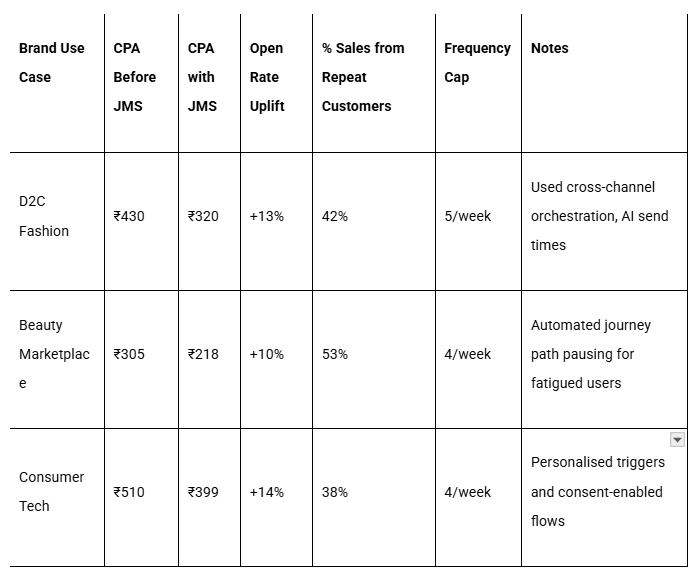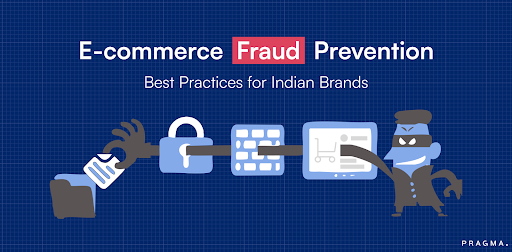Seventy percent of Indian consumers are exhausted by repetitive ads and constant digital nudges, making "campaign fatigue" the single biggest silent killer of D2C marketing ROI in 2025. When fatigue sets in, engagement plummets by 30%, conversion rates dip to 1.5% or below, and the cost for every new sale rises by a third. For scaling Indian brands, the old playbook of blasting out
- emails
- WhatsApp promos
- and push offers
is not just failing—it’s quietly driving opt-outs, unsubscribes, and mounting distrust.
Here we are diving deep into How JMS Reduces Campaign Fatigue with Smarter Automation Rules rewrite this script, shifting from channel-focused “more is better” logic to a customer-centric, behaviour-led approach. With JMS, every message, sequence, and campaign is scheduled based on what each customer has actually seen, done, and ignored. Smarter automation rules—like frequency caps, engagement filters, and predictive send time optimisation—ensure that every contact earns its keep. Instead of digital noise, brands deliver coordinated, context-driven nudges that land when the shopper is most likely to act.
Why does campaign fatigue cripple growing Indian D2C brands?
Scattershot messaging drains trust, loyalty, and revenue over time
Campaign fatigue now strikes faster across India than almost any other major market. Indians average nine hours a day across 5.4 digital media channels, bombarded by dozens of brand touchpoints.
The result: 64% find repeat messages “annoying,” with 54% feeling actively interrupted. When fatigue peaks, brand recall and trust nosedive—81% of Indian consumers say they need to trust a brand before buying, but only 39% currently do. D2C teams chasing every conversion with ever-louder, blunter tactics are losing the long game.
JMS turns this around by stitching journeys across all platforms—so if a consumer clicks a WhatsApp promo, they might get a tailored follow-up in email instead of a carbon-copy blast. When someone ignores two reminders, future nudges are paused or switched to new offers, not just resent. This orchestration builds confidence, with multicategory Indian brands seeing 2.2x reduction in fatigue and a 1.7x lift in purchase intent after adopting omnichannel journey management.
The key insight: reducing frequency and raising relevance increases both trust and profit.
How do automation rules actually prevent fatigue?
Personalised triggers, dynamic frequency capping, and consent-driven journeys
JMS automation moves beyond simple scheduling. It reads engagement signals in real time, adapting frequency and channel to customer mood. For example, frequency caps limit messages to a maximum of four contacts per week, per channel; suppression lists exclude recent purchasers or opt-outs instantly. Journey logic can dynamically pause campaigns for users showing signs of fatigue (low opens, skipped AB tests, multiple ignores).
Progressive brands now use send-time optimisation—AI models that select not just who gets a message, but exactly when, based on each user’s history. Adobe data shows send-time optimisation increases open rates by 15–22% when layered with frequency capping. These rules combine in what leading operators call a fatigue-prevention stack:
JMS Fatigue-Prevention Stack
1. Channel Frequency Caps: Max 4/week across any one platform.
2. Cross-channel Orchestration: Suppress duplicate nudges after engagement.
3. Personalised Triggers: Follow up based on each individual’s last action.
4. Dynamic Journey Paths: Pause, skip, or switch creative after 2 ignored messages.
5. AI-Driven Send Times: Predict the most likely open/click windows for each user.
6. Consent and Profile Sync: Always check opt-in status live before each send.
Brand example: A leading apparel D2C saw WhatsApp broadcast open rates jump to 98%, and 35% of Diwali stock move in three hours by capping frequency and using VIP early-access nudges for best customers.

The real power: JMS doesn’t just reduce fatigue metrics, it lifts all downstream revenue and retention KPIs.
What does real-world, Indian D2C orchestration look like?
Festive campaigns, win-back journeys, and VIP flows that delight AND convert
Smarter automation rules, implemented through Journey Management System (JMS) and WhatsApp orchestration, significantly reduce campaign fatigue and boost results for D2C brands.
For instance, during high-stakes festive campaigns, Indian D2C brands utilising JMS/WhatsApp achieved remarkable success:
- Open Rates: Up to 98% open rates for Diwali campaigns.
- Inventory Movement: One-third of festive inventory sold within hours.
- Campaign ROI: 30% increase over traditional blast campaigns.
Specific examples highlight the impact:
- FabAlley: Re-engaging back-in-stock shoppers via instant WhatsApp JMS nudges led to a 22% sales increase for those products within 48 hours.
- Nykaa: VIP early access flows powered by JMS resulted in 35% higher conversion rates, with 60% of top-spending VIPs making a purchase within 48 hours of their JMS-driven launch message.
Beyond festive periods, smart automation also drives:
- Win-Back Campaigns: Hyper-personalised, low-frequency journeys for churned users resulted in a 25% year-on-year churn reduction.
- Cross-Selling Flows: Synchronised across WhatsApp, email, and push, these flows helped D2C loyalty programs increase Average Order Value (AOV) by 15-20% after implementing journey management orchestration.
Ultimately, effective journey management translates into tangible business benefits: higher customer retention, reduced cost per acquisition, and marketing spend that consistently surpasses expectations.
How do you monitor, test, and refine for fatigue reduction?
Dashboards, A/B testing, and adaptive automation—forget set-and-forget
Monitoring campaign fatigue requires tight integration between JMS, CRM, and analytics. Advanced JMS platforms provide real-time reporting on fatigue indicators (open decay, unsub rate rises, engagement dips) and use A/B tests to compare frequency caps, channel mixes, and send-time windows at the cohort level. Heatmaps reveal when customers are most receptive. Top teams set up adaptive controls that auto-recalibrate frequency and suppression as user behaviour shifts over weeks and seasons.
Predictive analytics in leading JMS systems even recommend journey modifications—suggesting skipping upcoming sends, rotating creative, or pulling in a different channel (e.g. from WhatsApp to web push) for cohorts showing rising fatigue or declining engagement. Managers review these insights weekly to fine-tune segmentation and automate customer journey evolution.
Ongoing optimisation is non-negotiable: silence, relevance, and timing are now as important as creative in reducing fatigue.
Simple flowchart: detection → action → refresh
Trigger (metric breach) → Detect (auto rule) → Decide (pause/rotate/shift) → Act (swap creative or reallocate budget) → Monitor.
What are common pitfalls and how do you avoid them?
Common mistakes usually come from over-automation, poor tagging, or tight thresholds. They cost time and can hurt performance quickly.

Quick operational steps
- Run a 2-week validation phase with small budgets before full rollout.
- Label every creative and audience clearly.
- Keep a simple dashboard showing "rules fired" and "actions taken."
- Hold weekly 30-minute reviews of automated actions.
Avoid brittle automation: conservative rules, clear tags, and human oversight prevent most failures.
When should ops pause automation and go manual? — rules for human override and escalation
Automation should have clear guardrails for pause and human takeover. Use thresholds and impact rules for escalation.
Common triggers for pause
- Budget impact: automated action changes >15% of daily budget.
- Unusual metric swings: CTR or ROAS drops >30% within 24–48 hours.
- High-value campaigns: any automated move on campaigns with LTV > threshold requires sign-off.
- Repeated false positives: same rule firing repeatedly with no improvement.
Simple escalation workflow
Operational checklist
- Define who can pause (names/roles).
- Set SLAs for review: 15 minutes for high risk, 2 hours for medium.
- Keep a rollback plan and test it quarterly.
- Document every manual override with reason and outcome.
Pause automation when business impact is material — then investigate, document, and decide with a human in the loop.
To Wrap It Up
D2C growth now depends not on how much you say, but on when, why, and to whom you speak. Journey Management Systems, with smarter automation, let Indian brands orchestrate journeys that are felt—not forgotten. Brands that prioritise frequency capping, creative suppression, send-time optimisation, and consent-based journeys stand to outperform for years to come.
Don’t wait: Set up dynamic campaign rules, activate engagement-driven sends, and let your brand be the one customers actually want to hear from.
Over time, this shift turns marketing from noise into welcomed experience—and fatigue into loyalty.
For D2C brands serious about fighting campaign fatigue, Omni-channel CRM and WhatsApp Business Suite offer the advanced orchestration and real-time automation needed to win both sales and hearts in India’s most competitive markets.

FAQs (Frequently Asked Questions OnHow JMS Reduces Campaign Fatigue with Smarter Automation Rules)
How soon do you see results from JMS fatigue automation?
Most brands in India begin to see engagement and unsubscribe improvements within 4–6 weeks of rollout, with conversion and CLV impact compounding after a full journey cycle (90 days+).
Is frequency capping the only answer?
No—frequency capping is just one guardrail. The real secret is context: journey logic, exclusion rules, send-time optimisation, and personalising creative all work together for best-in-class results.
How do I handle festive campaign overload?
Use JMS to segment ready-buyers from non-buyers pre-launch, sequence reminders, and throttle frequency for less engaged contacts, ensuring top prospects are prioritised but not overwhelmed.
Does multichannel JMS work for small budgets?
Absolutely—many Indian D2C startups win with limited sends by using dynamic journeys and suppression logic, only expanding reach to broader segments once signals show readiness
Talk to our experts for a customised solution that can maximise your sales funnel
Book a demo


.png)

.png)